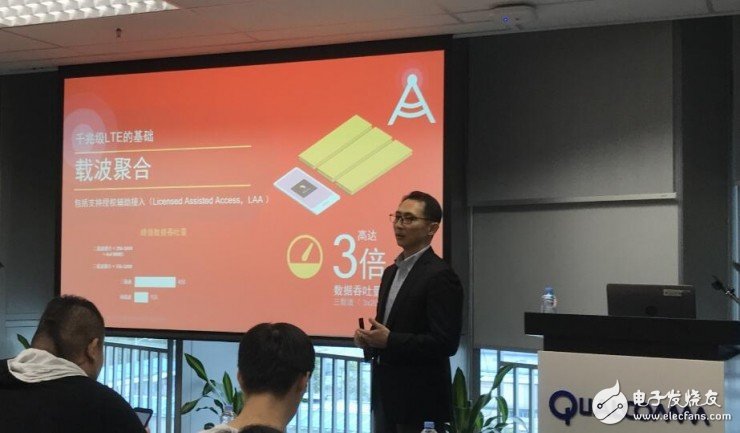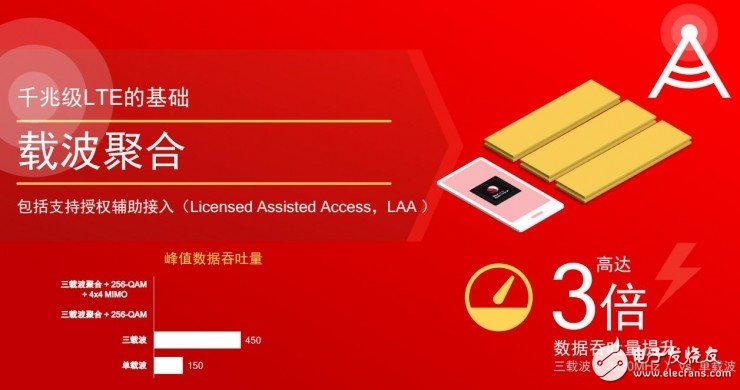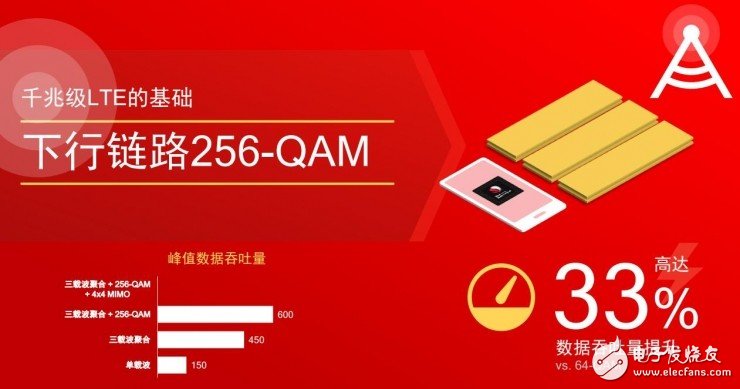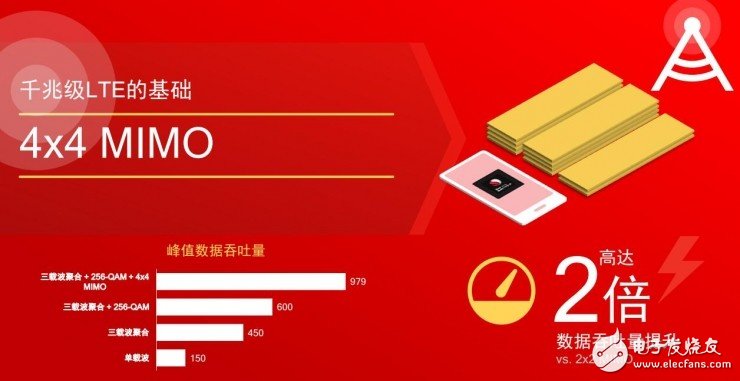In October of this year, Qualcomm and Australian operators Telstra, Ericsson and NETGEAR jointly launched the mobile router MR1100 based on the first Gigabit LTE modem Snapdragon X16. According to Qualcomm's plan, the next generation Snapdragon 835 will also integrate the Snapdragon X16. .
As the name implies, the theoretical speed of Gigabit LTE can reach 1Gbps at the fiber level, which is consistent with the standard defined by the International Telecommunication Union for 4G. The industry calls it LTE-A. Although Gigabit LTE cannot be compared with the speed of 5G Gbps, Shen Lei, senior director of Qualcomm's product market, believes that the former is the first step to achieve 5G commercialization, and will coexist with 5G for a long time in the future.
The principle of each generation of communication technology is similar, and Gigabit LTE can achieve ten times the speed of the first generation of LTE, mainly due to three key technologies: carrier aggregation, high-order modulation, and higher-order MIMO.

In wireless networks, one of the easiest ways to increase the transmission rate is to increase the transmission bandwidth. Each generation of mobile communication upgrades, carrier bandwidth continues to increase, a carrier of LTE is at least 20MHz bandwidth (and GSM is 200KHz, WCDMA and HSPA+ is 5MHz). How to further improve the transmission speed on this basis? In the process of LTE to LTE-A evolution, 3GPP proposes a carrier aggregation technology, which is to aggregate multiple carriers into higher bandwidth. In theory, 2-5 LTE component carriers (Component Carriers, CC) can be implemented in the LTE-A system. Aggregation.
Shen Lei used the Australian operator Telstra to give an example. "Telstra has three licensed frequency bands, each of which is 20MHz. Through RF and baseband technology, these three carriers and three frequency bands can be aggregated to achieve higher. Transmission speed."
What is the speed after three-carrier aggregation?
The popular point is that the three RF channels become a wider channel, three 20MHz is actually equivalent to 60MHz, and the data throughput is increased by three times. In addition, because 2&TImes; 2 MIMO has 2 data streams per carrier, there are 6 data streams under three-carrier conditions, and 64-QAM modulation is known to calculate 75 Mbps, and 6 carriers after three-carrier aggregation. It is equivalent to 75Mbps & TImes; 6 = 450Mbps.
Of course, the way this deployment is not fixed. Each carrier has a different frequency band, so the three carriers can be deployed flexibly, either continuously or discretely.
For example, a 700 MHz, a 900 MHz, and a 1.8 GHz can be aggregated; the TDD carrier and the FDD carrier can also be mixed together.
Higher order modulation - increase the number of transmitted signal bitsCarrier aggregation is the most direct and effective way to increase the rate, but the bandwidth resources of mobile communication systems are limited, and high-order modulation is a means to provide high data rates by using limited bandwidth resources.
High-order modulation is a complex modulation scheme. For example, increasing the complexity of the transceiver allows one signal to carry more bits. The initial downlink modulation method of LTE is 64-QAM, which is also a place to upgrade compared with 2G and 3G. It is well known that at present 64-QAM (64 samples, the more the number of samples, the higher the transmission efficiency), one signal can carry 6 bits, and if extended to 256-QAM (256 samples), one signal can carry With 8 bits, bandwidth efficiency is directly increased by 33%.

Then calculate the speed brought by 256-QAM, a data stream is increased by 33% from the 75-QAM 75Mbps, and the final result is 100Mbps. As mentioned above, there are 6 streams in the three-carrier aggregation, and now 100 Mbps is modulated on one data stream by 256-QAM modulation, so after three-carrier aggregation and high-order modulation, the transmission speed of 600 Mbps can be achieved.
High-order MIMO - increasing data flowLTE Cat.4 and above standards require MIMO (MulTIple-Input MulTIple-Output) technology, that is, multiple transmit and receive antennas are used at the transmitting end and the receiving end respectively, which allows signals to pass through multiple antennas at the transmitting end and the receiving end. Transmission and reception, which greatly increases the channel capacity. Initially LTE used 2×2 MIMO with two data streams.
However, 2×2 still can't reach the speed of gigabit. By deploying higher-order MIMO, that is, more antennas and more transceiver links, it is also a way to increase the transmission speed. One.
Taking Telstra's deployment as an example, it deploys 4×4 on two carriers, and the remaining one carrier still uses 2×2. Therefore, after using 4x4 MIMIO technology, the number of data streams on one carrier has changed from 2 to 4. The three carriers in this deployment, two carriers 4x4 MIMO, and one carrier 2x2 MIMO, for a total of 4 + 4 + 2 = 10 data streams.

In summary, with the support of three-carrier aggregation and 256-QAM modulation, one data stream can reach 100 Mbps, and 10 data streams are equivalent to 100 Mbps × 10 = 1 Gbps.
Of course, the data stream is not wirelessly added. Shen Lei said that the RF part, the baseband part, and the processing part of the Qualcomm X16 modem are currently in a limit state, and the future will be toward 12 or even 15 data streams. The direction of development.
In addition, the minimum configuration of LTE is two antennas, that is, 2x2 MIMO. For example, today's mobile phones are generally two antennas, at two diagonal positions or one on top of each other. However, the two antennas have a high threshold for mobile phone design. Because mobile phones are getting thinner and thinner, and batteries, many application processors, and camera modules are getting larger and larger, the space left for the antennas is getting smaller and smaller. The performance of a single antenna is actually declining. If you want to deploy 4 antennas, it is a challenge for mobile phone manufacturers. Currently, only the Samsung Galaxy S7/S7 Edge for North American T-Mobile and the Sony Xperia XZ have a 4-antenna design.
Although Gigabit LTE still has technical challenges, at least for now, it is already a more reliable technology than 5G, isn't it?
Electronic Cigarette,Vape Electronic Cigarette Disposable,Pre-Charge Use Electronic Atomizer,Disposable Electronic Cigarettes
Jinhu Weibao Trading Co., Ltd , https://www.weibaoxd.com